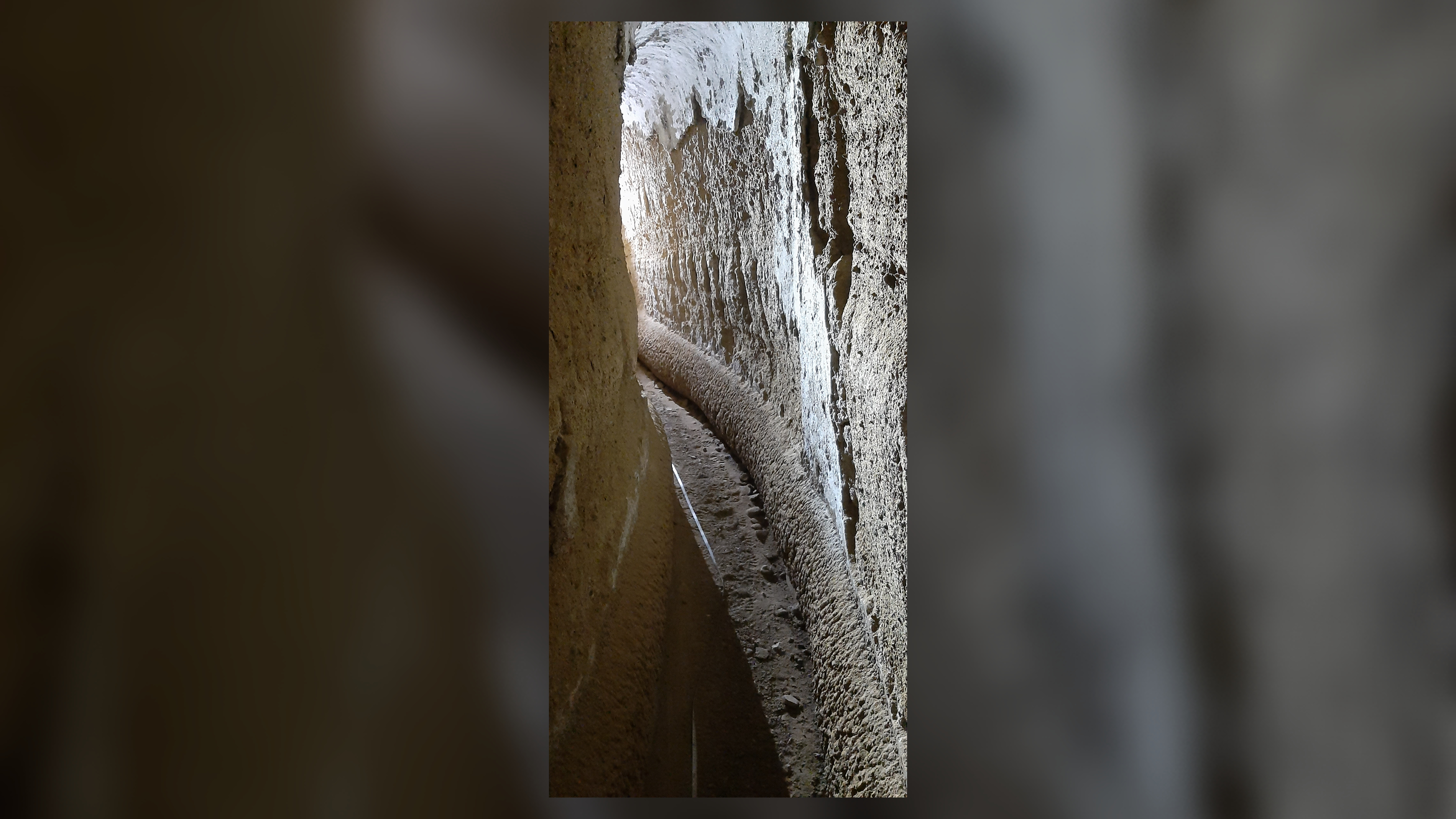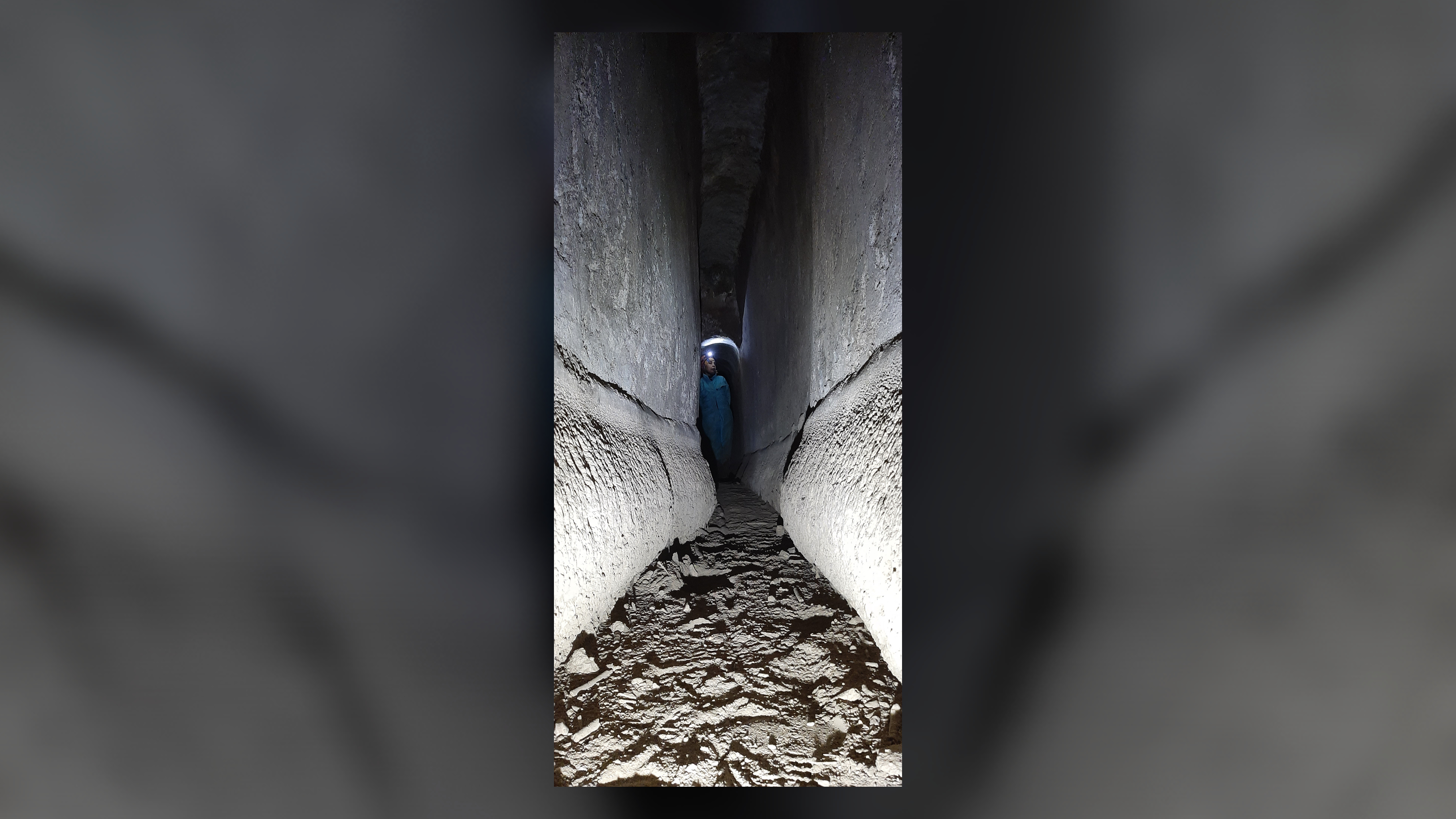Vast subterranean aqueduct in Naples once 'served elite Roman villas'
Once played in by local children, a vast tunnel that goes through a hill in Naples, Italy, is actually a Roman aqueduct, archaeologists say.

Forty years ago, when children in Naples were playing in caves and tunnels under the hill of Posillipo in Italy, they didn't know their playground was actually a Roman aqueduct. When they shared their memories with archaeological authorities recently, it kicked off an exploration of one of the longest, most mysterious examples of ancient water infrastructure in the Roman world.
Rome's famous aqueducts supplied water for baths, drinking, public fountains and more. Built during a period of about half a millennium (roughly 300 B.C. to A.D. 200), aqueducts around the former Roman Empire are highly recognizable today thanks to their multitiered arched structure. But this marvel of ancient architecture represents only a small fraction of the actual water system; the vast majority of the infrastructure is still underground.
Outside of Rome, subterranean aqueducts and their paths are much less understood. This knowledge gap included the newly investigated Aqua Augusta, also called the Serino aqueduct, which was built between 30 B.C. and 20 B.C. to connect luxury villas and suburban outposts in the Bay of Naples. Circling Naples and running down to the ancient vacation destination of Pompeii, the Aqua Augusta is known to have covered at least 87 miles (140 kilometers), bringing water to people all along the coast as well as inland.
But the complex Aqua Augusta has barely been explored by researchers, making it the least-documented aqueduct in the Roman world. New discoveries earlier this month by the Cocceius Association, a nonprofit group that engages in speleo-archaeological work, are bringing this fascinating aqueduct to light.
Related: Hidden ancient Roman 'Bridge of Nero' emerges from the Tiber during severe drought


Thanks to reports from locals who used to explore the tunnels as kids, association members found a branch of the aqueduct that carried drinking water to the hill of Posillipo and to the crescent-shaped island of Nisida. So far, around 2,100 feet (650 meters) of the excellently preserved aqueduct has been found, making it the longest known segment of the Aqua Augusta.
Graziano Ferrari, president of the Cocceius Association, told Live Science in an email that "the Augusta channel runs quite near to the surface, so the inner air is good, and strong breezes often run in the passages." Exploring the aqueduct requires considerable caving experience, though. Speleologists' most difficult challenge in exploring the tunnel was to circumvent the tangle of thorns at one entrance.
Get the world’s most fascinating discoveries delivered straight to your inbox.
"Luckily, the caving suits are quite thornproof," he said. "After succeeding in entering the channel, we met normal caving challenges — some sections where you have to crawl on all fours or squeeze through."
In a new report, Ferrari and Cocceius Association Vice President Raffaella Lamagna list several scientific studies that can be done now that this stretch of aqueduct has been found. Specifically, they will be able to calculate the ancient water flow with high precision, to learn more about the eruptive sequences that formed the hill of Posillipo, and to study the mineral deposits on the walls of the aqueduct.


Rabun Taylor, a professor of classics at the University of Texas at Austin who was not involved in the report, told Live Science in an email that the newly discovered aqueduct section is interesting because it is "actually a byway that served elite Roman villas, not a city. Multiple demands on this single water source stretched it very thin, requiring careful maintenance and strict rationing."
Taylor, an expert on Roman aqueducts, also said the new find "may be able to tell us a lot about the local climate over hundreds of years when the water was flowing." This insight is possible thanks to a thick deposit of lime, a calcium-rich mineral that "accumulates annually like tree rings and can be analyzed isotopically as a proxy for temperature and rainfall," he explained.
Ferrari, Lamagna and other members of the Cocceius Association plan to analyze the construction of the aqueduct as well, to determine the methods used and the presence of water control structures. "We believe that there are ample prospects for defining a research and exploration plan for this important discovery, which adds a significant element to the knowledge of the ancient population" living in the Bay of Naples, they wrote in the report.

Kristina Killgrove is a staff writer at Live Science with a focus on archaeology and paleoanthropology news. Her articles have also appeared in venues such as Forbes, Smithsonian, and Mental Floss. Kristina holds a Ph.D. in biological anthropology and an M.A. in classical archaeology from the University of North Carolina, as well as a B.A. in Latin from the University of Virginia, and she was formerly a university professor and researcher. She has received awards from the Society for American Archaeology and the American Anthropological Association for her science writing.


